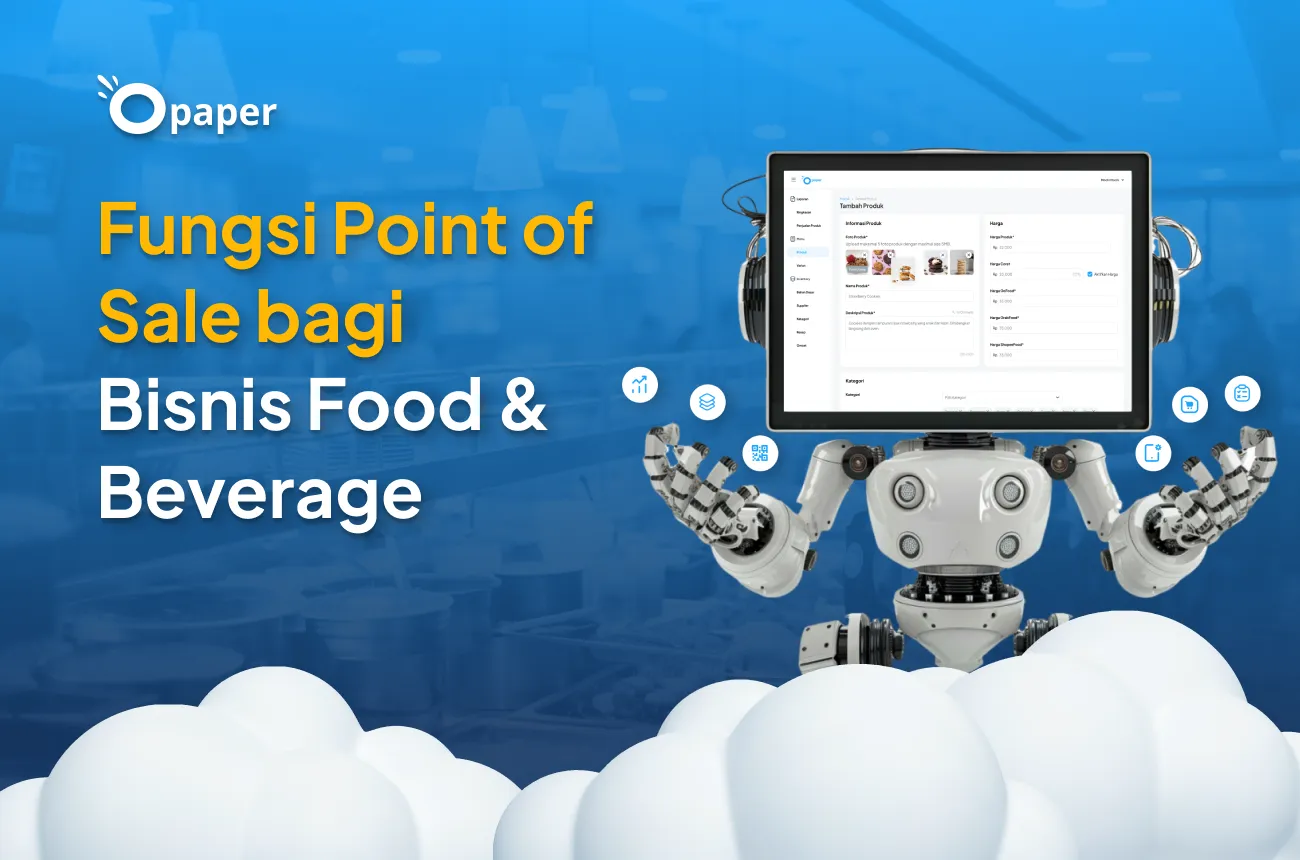Efficiency in the food & beverage business is crucial as it directly impacts customer experience and profitability. In day-to-day operations such as restaurants or cafes, every second counts to ensure orders are delivered quickly, food quality is consistent, and service is efficient.
Point of Sale (POS) applications help improve business management by effectively managing stock, tracking sales in real-time, and increasing payment accuracy. The data generated by POS also provides insights necessary for making more accurate decisions in stock management, menu adjustments, and better service strategies. By leveraging this technology, food & beverage businesses can optimize their operations, reduce costs, and enhance customer satisfaction.
Efficiency in Sales Management
Here are some benefits of using POS applications in the food & beverage business:
- Automation of transaction processes: POS automates the sales transaction process, speeding up service time to customers and reducing the likelihood of human error in price calculation and payment.
- Reduction of human error: With POS, the chances of human errors such as miscalculations or manual recording can be minimized, improving the accuracy and reliability of transaction data.
- Fast and accurate recording process: POS records transactions quickly and accurately, allowing business owners to easily track daily, weekly, or monthly sales without the need for time-consuming manual recording.
- Real-time transaction data storage: Transaction data is stored in real-time in the POS system, giving business owners direct and current access to sales and inventory information, facilitating quick and accurate decision-making.
- Automatic receipt printing feature: POS has an automatic feature to print payment receipts, making it easier for customers to obtain proof of transaction and helping maintain financial administration order.
Inventory Management
- Real-time stock monitoring: POS allows business owners to view stock levels directly and in real-time, avoiding shortages or excess inventory.
- Automatic notifications when stock is low: The POS system sends automatic notifications to users when a product's stock approaches the minimum limit, allowing for timely restocking.
- Integration with suppliers for stock replenishment: POS is integrated with the supplier database, facilitating the stock replenishment process by ordering directly from registered suppliers.
Employee Management
- Employee shift scheduling: This feature allows managers or business owners to efficiently create work schedules for employees, optimizing productivity and work time arrangements.
- Employee performance tracking: POS allows for the evaluation of employee performance based on data such as the number of sales or services provided to customers.
- User access and rights management: Data security is maintained with controlled access settings, ensuring that each employee has the appropriate access permissions according to their responsibilities.
Financial Reporting
- Daily, weekly, and monthly financial reports: POS automatically generates financial reports for specific periods, providing a clear picture of the business's financial performance.
- Sales trend analysis: Data from POS is used to analyze sales trends over time, aiding in strategic planning and decision-making.
- Tax report creation: POS provides the necessary reports for taxation purposes accurately and on time.
- Sales Data Analysis
- Detailed sales data collection: POS collects detailed sales data, such as products sold and transaction times, for in-depth analysis.
- Data visualization in graphs and tables: Sales information is displayed in easy-to-understand graphs and tables, aiding in the visual interpretation of data.
- Identification of best-selling products and peak hours: POS helps identify the most popular products and peak hours in a restaurant or cafe, allowing for stock adjustments and promotional strategies.
Improving Customer Service Quality
- Handling discounts, taxes, and additional fees: POS automatically manages the application of discounts, tax calculations, and the addition of extra charges such as service or delivery.
- Automatic discount application at the time of transaction: Customers can enjoy discounts that are automatically applied when making payments using POS.
- Accurate tax calculation: POS calculates taxes based on applicable tax rules, ensuring consistency and accuracy in tax payments.
- Addition of extra charges such as service or delivery: POS allows for the addition of extra charges such as additional services or delivery, facilitating the management of transactions involving extra costs.
- Support for various payment methods: POS supports various payment methods, including credit cards, e-wallets, or cash payments, increasing flexibility for customers.
- Ease of transaction process for customers: The payment process with POS is very fast and efficient, improving the customer experience with smoother and more professional service.
Conclusion
The use of Point of Sale (POS) applications in the food & beverage business is highly beneficial. With POS, you can more easily monitor stock, manage employee schedules, create financial reports, analyze sales data, and improve customer service. All of this not only makes operations more efficient but will also help your culinary business grow. Starting to use a POS application can be a smart move to chase better efficiency and profitability in your business. With this technology, you can be more prepared to face the increasingly tight market competition and ensure your business stays ahead in the ever-changing food & beverage industry.


